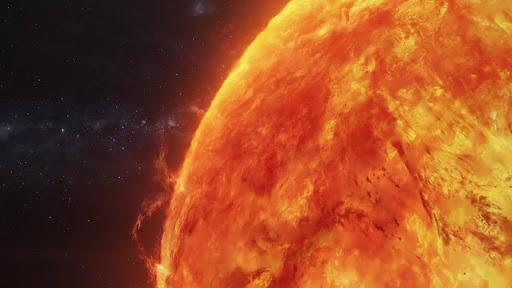
‘Peacock Jets’ on Sun Linked to Magnetic Flux Cancellation
The sun, our star and the center of our solar system, is a fascinating and complex entity that continues to captivate scientists with its intriguing phenomena. One such phenomenon is the recurring fan-shaped eruptions that have been observed in the lower atmosphere of the sun, known as “peacock jets”. These jets are a type of solar flare that has been studied extensively, but the underlying mechanism driving them has remained a mystery until recently.
In a breakthrough study, scientists have discovered that these “peacock jets” are powered by magnetic flux cancellation, where opposing magnetic fields vanish, triggering energy release. This new understanding of solar dynamics has significant implications for predicting space weather and safeguarding our technology.
What are Peacock Jets?
Peacock jets are a type of solar flare that appears as a fan-shaped eruption in the lower atmosphere of the sun. They are characterized by a bright, narrow jet of hot plasma that shoots upwards from the sun’s surface, often accompanied by a burst of radiation and energetic particles. These jets are particularly interesting because they occur in a specific region of the sun’s lower atmosphere known as the chromosphere, which is the layer between the sun’s surface and the corona.
The Mystery of the Peacock Jets
For years, scientists have been trying to understand the mechanism driving these peacock jets. Researchers have proposed various theories, including the idea that they are powered by the buildup of magnetic energy or the interaction between different magnetic fields. However, none of these theories have been able to fully explain the observed properties of the jets.
Magnetic Flux Cancellation: The Key to Unlocking the Mystery
In a recent study published in the journal Nature Physics, scientists from the Indian Institute of Science (IISc) have made a groundbreaking discovery that sheds light on the mechanism driving peacock jets. The researchers used advanced computer simulations to study the behavior of magnetic fields in the sun’s lower atmosphere and found that the jets are powered by magnetic flux cancellation.
Magnetic flux cancellation occurs when two opposing magnetic fields intersect and cancel each other out, releasing a large amount of energy in the process. This energy release is responsible for the formation of the peacock jets, which are characterized by a bright, narrow jet of hot plasma that shoots upwards from the sun’s surface.
How Magnetic Flux Cancellation Drives Peacock Jets
The researchers found that the magnetic flux cancellation occurs in a specific region of the sun’s lower atmosphere known as the chromosphere, where the magnetic fields are particularly strong. The cancellation of the magnetic fields creates a large amount of energy, which is then released in the form of a peacock jet.
The researchers used advanced computer simulations to study the behavior of the magnetic fields and found that the jets are powered by the interaction between two types of magnetic fields. The first type of field is known as the “photospheric field”, which is the magnetic field that emerges from the sun’s surface. The second type of field is known as the “chromospheric field”, which is the magnetic field that exists in the chromosphere.
The researchers found that the photospheric field and the chromospheric field are oriented in opposite directions, which creates a region of magnetic flux cancellation when they intersect. This cancellation of the magnetic fields releases a large amount of energy, which is then released in the form of a peacock jet.
Implications for Predicting Space Weather
The discovery of the mechanism driving peacock jets has significant implications for predicting space weather. Space weather refers to the dynamic and variable conditions in the space environment that can affect our technology and our daily lives. The sun is a major driver of space weather, and understanding the mechanisms that drive solar flares and coronal mass ejections (CMEs) is crucial for predicting these events.
The peacock jets are a type of solar flare that can trigger CMEs, which can have significant effects on our technology and our daily lives. By understanding the mechanism driving these jets, scientists can better predict when and where they will occur, which will help to safeguard our technology and our daily lives.
Conclusion
The discovery of the mechanism driving peacock jets is a significant breakthrough in our understanding of the sun’s behavior. The finding that magnetic flux cancellation is the key to unlocking the mystery of these jets has significant implications for predicting space weather and safeguarding our technology. As scientists continue to study the sun and its behavior, we can expect to learn even more about the complex and fascinating phenomena that occur on our star.
Source:






